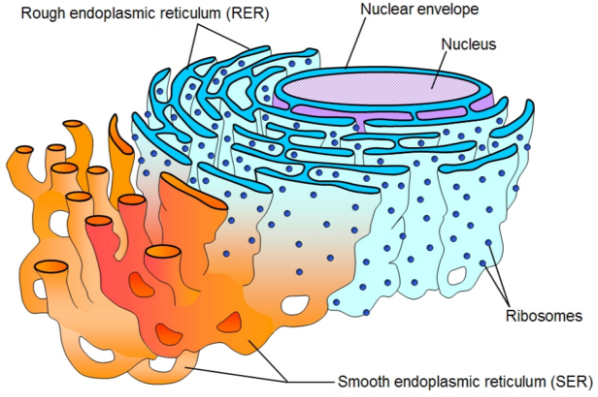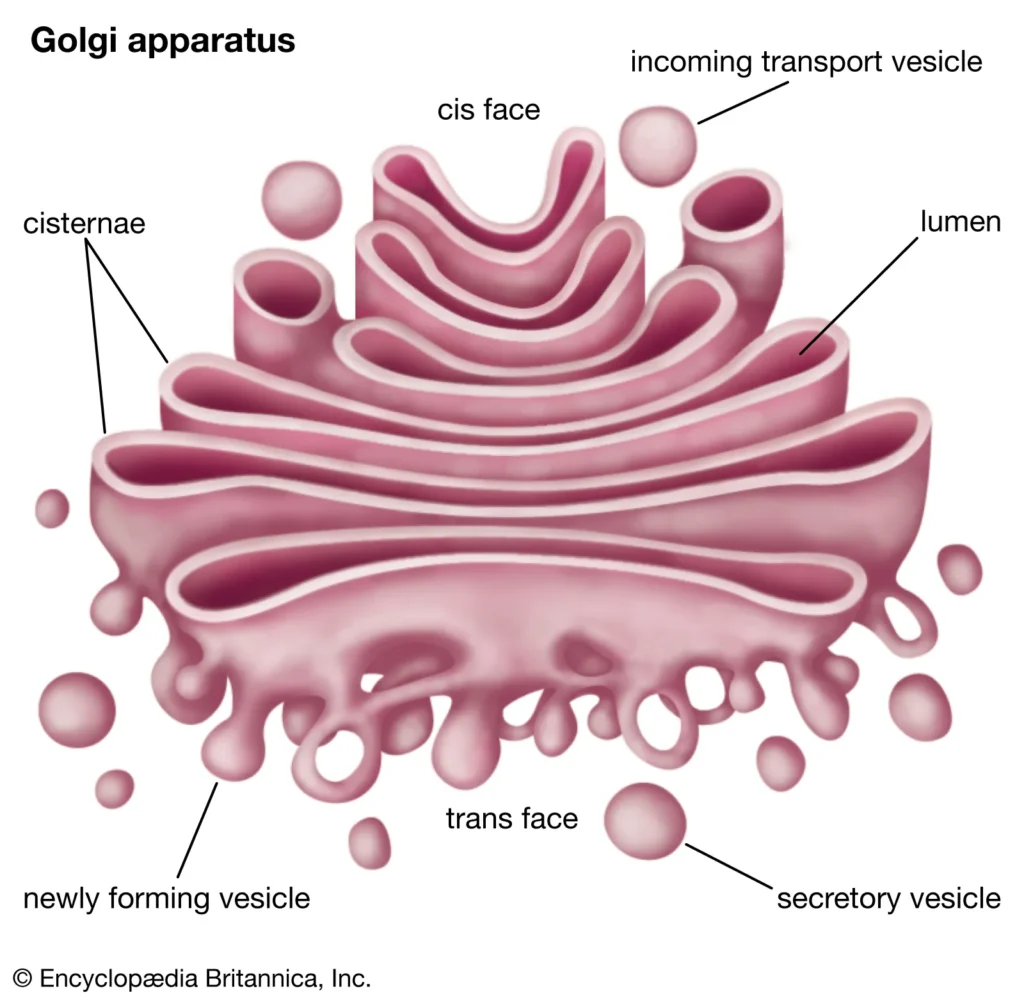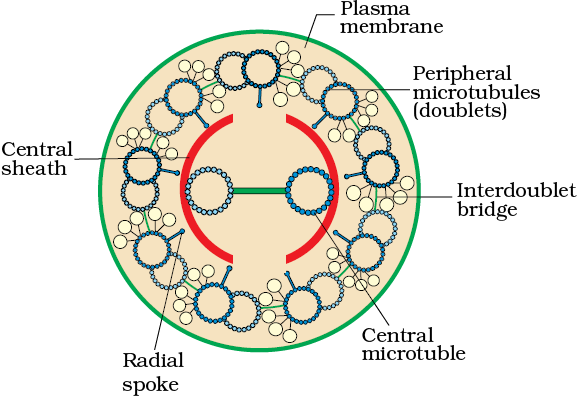INTRODUCTION OF CELL THE UNIT OF LIFE
- What makes an organisation living? The answer to this is the presence of the basic unit of the life cell in all living organisation. All organisms are composed of cells.
WHAT IS A CELL?
- Cell the unit of life- Cell is the fundamental structure and functional unit of all living organisms. Anything less then a complete structure of a cell does not ensure independent living.
- Anton Von Leeuwenhoek first saw and described a live cell.
CELL THEORY
- In 1838, Mathians Schleiden, a German botanist, examined a large number of plants and observed that all plants are composed of different kinds of cells which form the tissue of the plant. At the same time, Schwann (1839) a British Zoologist, reported that animal cells and a thin layer called plasma membrane. He concluded that plant cells have cell walls. Schleiden and Schwann together formulated the cell theory but this theorydid not explain as to how-new cells are formed.
- Rudolf Virchow explained that new cells arise from pre-existing cells (Omnis cellula-e cellula) and finally modified the cell theory as:-
(i) All living organisms are composed of cells and products of cells
(ii) A cells arise from pre-existing cells.
AN OVERVIEW OF CELL
- Cells differ greatly in size, shape and activities for example, Mycoplasma is smalliest cell while egg of an ostrich is the largest isolated single cell, Nerve cells are some of the longest cells.
- The cytoplasm is main areana of cellular activities in both plant and animal cells
- Ribosomes are non-membrane bound organelles found in both eukaryotic and prokaryotic cells. Apart from cytoplasm, they are also found in mitochondria, chloroplast and on rough ER.
- Animal cells contain another non-membrane bound organelle called centrosome which helps in cell division.
- Cells that have membrane bound nuclei are called eukaryotic cells that lack a membrane bound nucleus called prokaryotic cells.
PROKARYOTIC CELLS
- Lack membrane bound cell organelles.
- Are represented by bacteria, blue gree algae, Mycolpasma or PPLO.
- In additional to genomic DNA, many bacteria have small circular DNA outside the genomic DNA called plasmids. Plasmid DNA confers certain unique phenotypic charactersto such bacteria. One such character is resistance toantibiotics. Plasmid DNA is used to monitor bacterial transformation with foreign.
- All prokaryotic have a cell wall surrounding the cell membrane (except Mycoplasma).
CELL ENVELOPS AND ITS MODIFICATIONS
- Most prokaryotic cells have cell envelop, which is tightly bound three layered structure.
- The outermost glycocalyx followed by cell wall and then the plasma membrane.
- Glycocalyx may be a loose sheath called slime layer of thick and tough called capsule.
- The cell wall prevent bacteria from bursting of collapsing.
- Extension of plasma membrane into the cell in the form of vesicles, tubules and lamellas are mesosome. It helps in cell wall formation, DNA replication, distribution of daughter cells, respiration, secretion process and increase the surface area if plasma membrane.
- In cyanobacteria, chromatophores contain pigments.
- Each layer of the cell envelop performs distinct function, they act together as a single protective unit. The plasma membrane is selectively permeable in nature and interacts with the outside world. It is structurally similar to that of eukaryoties.
- Bacteria may be motile or non-motile, If motile they have flagella, composed of three parts filament, hook and basal body.
- Pili and fimbriae do not play role in motility.
- Bacteria on the basis of the differences in the cell envelope can be Gram positive or Gram negative
RIBOSOMES AND INCLUSION BODIES
- Ribosomes are 70S, has subunits 50S and 30S. Several ribosomes may attach to a single mRNA and form a chain called polyribosome or polysome.
- Ribosomesare associated with plasma membrane.
- The ribosomes of a polysome translate the mRNA into proteins. Inclusion bodies.
- Reserve material is stored in the form of inclusion bodies in prokaryotic cytoplasm.eg. phosphate granules, cyanophycean granules and glycogen granules.
- Gas vacuoles are found in blue green and purple and green photosynthetic bacteria
EUKARYOTIC CELLS
- Besides the nucleus eukaryotic cells have other membrane bound structure called organelles like ER, Golgi complex etc.
- The eukaryotes include all the protists, plants, animals and fungi. Plants cells have large vacuole. Animals cells have centrioles which are almost absent in plant cells.
- Ribosomes are 80S (in cytoplasm). Small subunit is 40S and large *)S.
CELL MEMBRANE
- Chemical studies on the cell membrane , especially in human RBC enabled scientists to reduce the possible structure of plasma membrane.
- Cell membrane is mainly composed of proteins and lipids (mainly phospholipids).
- Phospholipids consist of polar head (outward) and non-polar tail (hydrophobic) inner side. In human RBC 52% is proteins and 40% lipids.
- Membrane proteins can be integralor peripheral.
- Most accepted model for structure of cell membrane is fluid mosaic model given by Singer and Nicolson (1972).
- Membrane is selectively permeable. Many molecules can move across the membrane without any requirementof energy is called passive transport. Movement of water by difusion is called osmosis. Many molecules requre energy/ATP for their transport called active transport, e.g. Na+/K+ pump.
- The quasi-fluid nature of lipid enables lateral movement of proteins within the overall bilayer. This ability to move within the membrane is measured as its fluidity.
- The fluid nature of membrane is important for functions like call growth, formation of intercellular junctions, secretion, endocytosis, cell division etc.
CELL WALL
- Non-living rigid structure called cell wall forms an outer covering of the plasma membrane in fungi and plants. The cell wall of a young plant cell , the primary wall is capable of growth which gradually diminishes as the cell matures and the secondary wall is formed on inner side (towards membrane) of the cell. The middle lamella is a layer mainly of calcium pectate.
- Algae have cell wall made up of cellulose, galactans and calcium carbonate. In plants it consists of cellulose, hemicellulose, pectin and proteins.
ENDOMEMBRANE SYSTEM
- While each of the membranous organelles is distinct in terms of its structure and function, many of these are considered together as an endomembrane system because their functions are coordinated.
ENDOPLASMIC RETICULUM (ER):-
- Reticulum of tiny tubular structures scattered in the cytoplasm is called ER.
- The ER which has ribosomes on surface are called RER , in absence of ribosomes they appear smooth called SER.
- RER is involved in protein synthesis whereas SER is involved in lipid synthesis.
GOLGI APPARATUS:-
- These were named Golgi bodies after discoverer name Camilo Golgi.
- They consist of cisternae, which are concentrically arranged near the nucleus with distinct convax cis or theforming face and concave trans or the maturing face.
- Principally performs the function of packaging of materials. It is the impotant site for formation glycoproteines and glycolipids.
LYSOSOME:-
- These are membrane bound vasicular structures formed by the process of packaging in the Golgi apparatus.
- They are rich in hydrolytic enzyme (lipases, protesses carbohydrases), optimally active at acidic pH.
- These enzyme are capable of digesting carbohydrates, proteins, lipids and nucleic acids.
VACUOLE:-
- The vacuole is the membrane bound space found in the cytoplasm, membrane is called tonoplast.
- Contain water,sap,excretory product and other materials not useful for the cell. In Amoeba, contractile vacuole is important for excretion.
- In many cells, as in protists, food vacuoles are formed by engulfing the food particles.


MITOCHONDRIA
- Mitochondia unless specifically stained are not easily visible under microscope.
- Each mitochondria is a double membrane bound structure with inner compartment called matrix. The two memmbranes have their own specific enzymes.
- The outer membrane form the continues limiting boundary of the organelle and inner membrane form cristae.
- Mitochondia are the sites of aerobic respiration. they produce cellular energy in the form of ATP, hence called ‘power house of the cell’. The matrix has single circular DNA molecules, ribosomes (70s) and the component required for synthesis of protein. Here ‘S’ (Svedberg’s unit) stands for sedimention coefficint. it is an indirect measure of density and size.
PLASTIDS
- Plastids are found in all plants cells and in euglenoids. Based on the pigments plastids can be classified can be classified into chloroplast, chromoplast and leucoplasts
- The chloroplast contain chlorophyll and carotenoids pigments. the leucoplast are colorless plastids. Amyloplasts store carbohydrates e.g., Potato, Elaiplasts store oils and fats whereas the aleuroplast store proteins.
- Choloplast are also double membrane bound structure which has menbranous sac likestructure called thylakoids and the matrix is called stroma. It also contains small, ds circular DNA and ribosomes. Carotenoids is fat soluble pigment eg., carotene, xanthophyll etc.
- The ribosomes of the carotenoids (70s) are smaller than cytoplasmic ribosomes.
- Thylokoids are arranged in stacks called grana (singular- granum). Flate membranous the tubules called the stroma lamellae connecting the thylakoids of the different grana.
- Stroma contain required required enzymes for carbohydrates and protein synthesis.
- Chlorophyll pigments are present in the thylakoids.
CYTOSKELETON
- An elaborate network of filamentous proteinaceous structure present in the cytoplasm is collectively referred to as the cytoskeleton.
- It is involved in many function such as mechanical support, motility, maintaince of the shape of the cell.
CENTROSOME AND CENTRIOLES
- Centrosome is an organelle usually containing two cylindrical structures called centriols. They are surrounded by amorphous pericentriols materials and lie perpendicular to each oyher.
- The central part of the proximal region of the centriole is proteinaceous called the hub, which is connected with tubules of the peripherals triplets (nine) by radial spokes made of protein.
CILIA AND FLAGELLA
- Cilia and flagella are hair like outgrowth of the cell membrane. Flagella are comparatively longer and responsible for cell movement.
- The prokaryotic Bactria also possess flagella but these are structurally different from eukaryotic flagella.
- The central core is called axoneme and arrangment of microtubules is referred to as the 9+2 array.
- Both celium and flagellum arise from centriols like structure called basal bodies. They covered will plasma membrane.

NUCLEUS
- Nucleus as a cell organelle was first described by Robert brown as early 1831. Later the material of nucleus was given the name chromatin by flemming.
- Interphase nucleus has chromatin, nuclear matrix and nucleolus. membranes is perinuclear space.
- Outer membrane usually remains remains continuous with the endoplasmic reticulum and also bears ribosomes on it.
- The nuclear matrix or the nucleoplasm contains nucleolus and chromatin.
- During different stages of cell division, cells show structured chromosomes. Chromatin contain DNA, some basic histones, some non- histones and some RNA.
- Every chromosome has primary constriction called centromere on the sidess of which disc shaped structures called kinetochores are present.
- Based on the position of centromere, the chromosome can be classified into four types:
- Metacentric- Centromere is in the middle
- Sub metacentric- Centromere slightly away from the middle
- Acrocentric- Centromere situated close to one end
- Telocentric- Centromere at terminal position
- Sometimes a few chromosomes have non staining secondary constrictions at a constant location. This gives the appearance of a small fragment called the satellite.
- Nucleolus is not a membrane bound structure and it is site for active ribosomal RNA synthesis.
MICROBODIES
- Many membrane bound minute vesicles called micro bodies that contain various enzymes, are present in both plants and animals cells.

FAQ’s
A cell is the basic structural and functional unit of all living organisms. It is the smallest unit of life that can perform all the essential functions necessary for survival.
Cells contain various structures and organelles, including the cell membrane, cytoplasm, nucleus, mitochondria, endoplasmic reticulum, Golgi apparatus, ribosomes, and lysosomes.
The cell membrane, also known as the plasma membrane, surrounds the cell and regulates the passage of substances in and out of the cell. It maintains cell integrity and allows communication with the external environment.
The nucleus houses the cell’s genetic material, including DNA, which contains instructions for protein synthesis and cellular functions. It controls gene expression and regulates cell activities.
Cells obtain energy through cellular respiration, a process that occurs in the mitochondria and involves the breakdown of glucose to produce ATP (adenosine triphosphate), the cell’s primary energy currency.
Organelles are specialized structures within cells that carry out specific functions. For example, mitochondria produce energy, ribosomes synthesize proteins, and the endoplasmic reticulum helps in protein and lipid synthesis.
Prokaryotic cells, found in bacteria and archaea, lack a distinct nucleus and membrane-bound organelles. Eukaryotic cells, found in plants, animals, fungi, and protists, have a nucleus and membrane-bound organelles.
Cells communicate through chemical signals, such as hormones and neurotransmitters, which bind to receptors on the cell surface. They also interact through direct contact and exchange of molecules via gap junctions or plasmodesmata.
The cell cycle is the series of events that occur in a cell, including growth, DNA replication, and cell division. It is essential for growth, development, and reproduction, as it ensures the accurate transmission of genetic information to daughter cells.
Cells maintain homeostasis, or internal balance, by regulating the concentration of ions, nutrients, and waste products inside the cell. They also respond to changes in the external environment to ensure optimal conditions for survival.
2 thoughts on “NCERT CELL: THE UNIT OF LIFE CLASS 11”